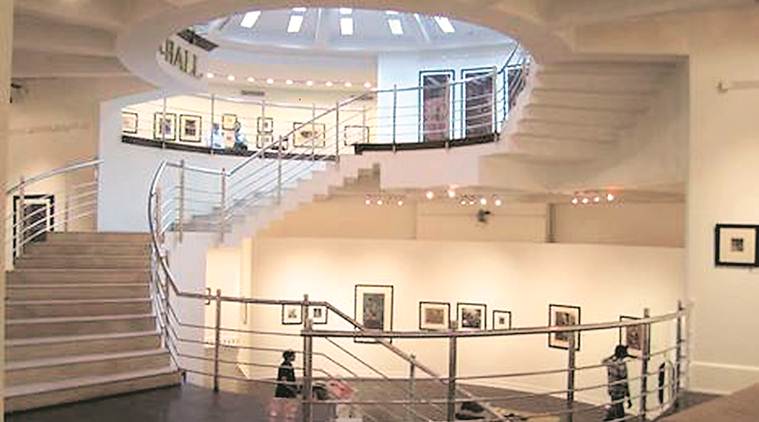Written by Vandana Kalra |Updated: February 12, 2019 10:21:12 am
Joining the Dots: How artists are questioning governance systems at the National Gallery of Modern Art
Established in independent India “to acquire and preserve works of modern art from 1850s onward” and “organise special exhibitions”, among its several other objectives, this is not the first time that the functioning of NGMA is under scrutiny.

On February 8, during his speech at the inauguration of artist Prabhakar Barwe’s retrospective at the National Gallery of Modern Art (NGMA) in Mumbai, when actor-director Amol Palekar raised concerns about the functioning of the national institution, it was both revelatory and distressing for the members of the art fraternity in India.
Repeatedly interrupted during his speech, Palekar voiced several issues. “This retrospective (the exhibition) will be the last show that is decided by the advisory committee of local artists and not by some bureaucrat or an agent of the government with an agenda of either moral policing or proliferation of certain art commensurate with an ideological incline. As of November 13, 2018, the artists’ advisory committees operating at both regional centres i.e. at Mumbai and Bangalore have been abolished, is what I have learnt… Till now, which exhibition will be held at which space of the two NGMA branches, namely at Mumbai and Bangalore, was decided by the local artists’ advisory committee. Each committee operated for three years. At the end of its tenure, the advisory committee was reconvened with new members…,” he said, “All future exhibitions of artworks, not from NGMA’s own collection, would be allotted only 1/6th of the area in NGMA Mumbai, restricting those only to the dome area… Commensurate with this new policy, the proposed retrospectives of Mehli Gobhai and Sudhir Patwardhan scheduled respectively in March-April and December 2019, were cancelled.”
While Anita Rupavataram, director of NGMA Mumbai, expressed her displeasure at the event, stating, “What is presented is a one-sided story,” most in the audience were distraught. “It was quite upsetting for everyone there.
Internationally, museums hold such important retrospectives of artists, why can’t that happen in India,” says artist Lalitha Lajmi, who was present at the session.

Veteran artist Sudhir Patwardhan, whose exhibition Palekar referred to, clarified, “It has not been cancelled but I will only get the dome. We have sent letters requesting that only that part of the gallery is not sufficient for the kind of show that I was planning.”
On February 10, Adwaita Gadanayak, Director General of NGMA, also issued a statement that read: “The Advisory Committees of NGMA Mumbai, Bengaluru and Delhi have not been dissolved. Their terms have ended recently (Mumbai and Bengaluru committees’ terms ended on 15 November 2018 and of Delhi on 17 January 2019). The committees are in the process of being reconstituted.” He also added, “Regarding permanent collections, it is clarified that NGMA proposes to display its own collections (including artworks by great masters) initially over a two-year period. Some artists have expressed their apprehensions about availability of less space for temporary exhibitions and retrospectives. NGMA is deliberating on suggestions received from artists, and a final decision will be taken shortly in consultation with all stakeholders.”






















No hay comentarios:
Publicar un comentario